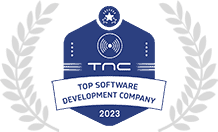The world of artificial intelligence is rapidly evolving, and one of the most exciting advancements in this field is Generative AI. At the forefront of this technology is GPT-4, developed by OpenAI. This article will explore the capabilities of Generative AI, specifically focusing on GPT-4, its applications, implications, and what lies ahead in the future of AI technology. Understanding the nuances of Generative AI is crucial for individuals and organizations looking to harness its potential for innovative solutions.
Generative AI refers to a class of artificial intelligence systems capable of generating content, from text and images to audio and video. The term encompasses various models, with GPT-4 being one of the most notable examples. Developed by OpenAI, GPT-4 represents a significant leap forward in natural language processing and understanding, allowing it to create human-like text and engage in meaningful conversations.
1. What is Generative AI?
Generative AI uses machine learning algorithms to create new content based on existing data. Unlike traditional AI, which typically focuses on recognizing patterns and making predictions, Generative AI can produce new information that resembles its training data.
- Types of Generative Models: Several types of models fall under the umbrella of Generative AI, including:
- Generative Adversarial Networks (GANs): GANs consist of two neural networks—the generator and the discriminator—that work against each other to produce realistic data.
- Variational Autoencoders (VAEs): VAEs encode input data into a compressed representation and then decode it back into a generated output.
- Transformers: These models, such as GPT-4, leverage attention mechanisms to understand context and generate coherent text.
- Applications of Generative AI: The applications of Generative AI span various fields, including:
- Content Creation: Writing articles, generating marketing copy, and creating social media posts.
- Art and Design: Producing artwork, music, and design concepts.
- Healthcare: Assisting in drug discovery and medical diagnosis through data generation.
2. The Evolution of Generative AI
The journey of Generative AI has seen remarkable advancements over the years. From early models to the sophisticated systems we have today, let’s explore this evolution.
2.1. Early Developments
The foundations of Generative AI can be traced back to early machine learning algorithms and neural networks. Initial attempts to generate content relied heavily on rule-based systems and limited datasets, resulting in basic outputs.
- Markov Chains: Early models like Markov chains were used for text generation, where the probability of a word being chosen depended on the preceding words.
2.2. The Rise of Neural Networks
With the introduction of deep learning, Generative AI began to flourish. Neural networks enabled more complex models capable of understanding intricate patterns in data.
- Introduction of GANs: In 2014, Ian Goodfellow introduced GANs, marking a significant milestone in the field. GANs could generate highly realistic images and were soon adopted for various creative applications.
2.3. The Advent of Transformers
The introduction of transformer architecture in 2017 revolutionized natural language processing. Transformers utilize attention mechanisms to weigh the significance of different words in a sentence, enabling more coherent and contextually aware outputs.
- GPT Models: OpenAI’s Generative Pre-trained Transformer (GPT) series, starting from GPT-1, showed exponential improvements in language generation. GPT-2 demonstrated the ability to generate coherent essays and articles, leading to public fascination and concern over its potential misuse.
3. What is GPT-4?
GPT-4 is the latest iteration in the GPT series, showcasing advancements in various aspects of language understanding and generation. Building upon the strengths of its predecessor, GPT-3, it introduces enhancements that broaden its capabilities.
3.1. Key Features of GPT-4
- Larger Training Dataset: GPT-4 is trained on an even larger dataset compared to GPT-3, encompassing diverse sources of information. This extensive training allows it to generate more accurate and contextually relevant responses.
- Improved Contextual Understanding: With a deeper understanding of context and nuance, GPT-4 can engage in conversations that feel more natural and human-like. It excels in following complex prompts and maintaining coherence over extended interactions.
- Multimodal Capabilities: Unlike earlier models, GPT-4 can handle multimodal inputs, enabling it to process and generate content that includes text, images, and possibly other forms of data.
3.2. Applications of GPT-4
GPT-4’s versatility makes it suitable for various applications across industries:
- Content Generation: Businesses can leverage GPT-4 for creating high-quality blog posts, product descriptions, and marketing materials, saving time and resources.
- Customer Support: GPT-4 can power chatbots and virtual assistants, providing personalized and efficient customer service experiences.
- Education: It can be utilized as a tutoring tool, offering explanations, answering questions, and providing resources for learners.
4. The Impact of Generative AI on Industries
Generative AI, particularly through models like GPT-4, is reshaping industries by enabling new ways of creating, communicating, and solving problems. Let’s explore its impact across various sectors.
4.1. Creative Industries
In creative fields such as art, music, and writing, Generative AI is changing the landscape by providing artists with new tools for expression.
- Art and Design: Artists can collaborate with AI to generate novel designs or artwork, pushing the boundaries of creativity. AI-generated art has gained recognition in galleries and auctions, prompting discussions about authorship and creativity.
- Music Production: Musicians are using AI to compose music, generate melodies, and even create lyrics. This allows for faster production and the exploration of innovative sounds.
4.2. Marketing and Advertising
In marketing, Generative AI enables the creation of tailored content that resonates with target audiences.
- Personalized Campaigns: Marketers can generate personalized emails, advertisements, and social media posts, enhancing engagement and conversion rates.
- Market Research: AI can analyze consumer data to identify trends and preferences, guiding marketing strategies and content creation.
4.3. Healthcare
Generative AI is making strides in the healthcare sector by improving diagnostics and drug discovery.
- Drug Discovery: AI models can generate molecular structures with desired properties, accelerating the discovery of new pharmaceuticals and treatments.
- Medical Diagnostics: By analyzing patient data, AI can assist healthcare professionals in diagnosing diseases and suggesting treatment options, leading to improved patient outcomes.
5. Ethical Considerations in Generative AI
As with any emerging technology, Generative AI raises important ethical questions that need to be addressed. Understanding these implications is crucial for responsible development and deployment.
5.1. Misinformation and Fake Content
The ability of Generative AI to produce realistic text and media poses challenges related to misinformation. Misleading or fake content can easily be generated, leading to potential harm.
- Combating Misinformation: Efforts must be made to develop technologies and policies that can identify and combat misinformation effectively.
5.2. Ownership and Copyright Issues
As AI generates creative content, questions arise regarding ownership and copyright. Who owns the rights to AI-generated art, music, or literature?
- Legal Frameworks: Existing copyright laws may need to be reevaluated to address the unique challenges posed by AI-generated content.
5.3. Bias and Fairness
Generative AI models can inadvertently perpetuate biases present in their training data. Addressing these biases is essential for ensuring fair and equitable outcomes.
- Diverse Datasets: Using diverse and representative datasets for training can help mitigate bias in AI-generated content.
6. The Future of Generative AI
The future of Generative AI, particularly with advancements like GPT-4, holds tremendous potential. As technology continues to evolve, we can expect several key trends to shape its development.
6.1. Enhanced Personalization
Generative AI will enable even greater levels of personalization in various applications. From tailored content recommendations to individualized learning experiences, AI will adapt to users’ needs in real time.
6.2. Collaborative Creativity
The relationship between humans and AI will evolve into a collaborative partnership. Artists, writers, and creators will increasingly see AI as a co-creator, inspiring new forms of expression and creativity.
6.3. Integration into Everyday Tools
Generative AI will become integrated into everyday tools and applications, making it more accessible to users across different fields. From writing assistants to design software, AI will enhance productivity and creativity.
7. Conclusion
Generative AI, epitomized by models like GPT-4, represents a transformative force in technology. Its ability to create content across various domains is revolutionizing industries and changing the way we interact with machines. However, as we embrace these advancements, it is essential to navigate the ethical considerations and challenges that arise.
By understanding the power of Generative AI and its implications, individuals and organizations can harness its potential for innovation while fostering a responsible approach to its deployment. As we look ahead, the future of Generative AI promises to be dynamic, collaborative, and impactful.
FAQs
- What is Generative AI?
- Generative AI refers to a class of artificial intelligence that can create new content, such as text, images, audio, and video, based on existing data.
- How does GPT-4 differ from its predecessor, GPT-3?
- GPT-4 has a larger training dataset, improved contextual understanding, and multimodal capabilities, allowing it to generate more coherent and diverse outputs.
- What are the applications of Generative AI?
- Applications include content creation, customer support, art and design, music production, and healthcare.
- What ethical concerns are associated with Generative AI?
- Concerns include misinformation, ownership of AI-generated content, and bias in the training data.
- How can Generative AI enhance marketing strategies?
- It allows for personalized content creation, targeted marketing campaigns, and better market analysis through data insights.
- What role does Generative AI play in healthcare?
- It aids in drug discovery, improves medical diagnostics, and can assist healthcare professionals in decision-making.
- What are Generative Adversarial Networks (GANs)?
- GANs consist of two neural networks—the generator and the discriminator—that work against each other to produce realistic data.
- How does Generative AI impact creative industries?
- It provides artists and musicians with tools for expression, enabling collaboration and faster production of creative works.
- What challenges do biases in Generative AI present?
- Biases can lead to unfair outcomes and reinforce stereotypes, necessitating the use of diverse datasets for training.
- How can we combat misinformation generated by AI?
- Developing technologies and policies to identify and address fake content is crucial for mitigating misinformation.
- What is the future of Generative AI?
- The future includes enhanced personalization, collaborative creativity, and integration into everyday tools.
- Can Generative AI create high-quality images and videos?
- Yes, Generative AI can produce realistic images and videos, significantly impacting art and media production.
- What are the implications of AI-generated content on copyright laws?
- Existing copyright laws may need to be reexamined to address ownership rights for AI-generated works.
- How does AI learn to generate content?
- AI learns from vast datasets, identifying patterns and relationships to produce coherent and contextually relevant outputs.
- What are the key features of GPT-4?
- Key features include a larger training dataset, improved contextual understanding, and multimodal capabilities.
- How is Generative AI used in education?
- It can act as a tutoring tool, providing explanations and resources tailored to individual learners’ needs.
- What is the significance of multimodal capabilities in GPT-4?
- Multimodal capabilities allow GPT-4 to process and generate various types of data, enhancing its versatility.
- How do organizations ensure ethical AI use?
- Organizations can implement guidelines, conduct regular audits, and promote transparency to ensure responsible AI use.
- What is the importance of diverse datasets in training AI models?
- Diverse datasets help reduce bias and improve the fairness and accuracy of AI-generated content.
- How can individuals and businesses get started with Generative AI?
- Individuals and businesses can explore available tools and platforms, experiment with use cases, and stay informed about developments in the field.
- Natural Language Processing (NLP): How AI Understands Human Language - October 4, 2024
- AI in Autonomous Vehicles: Driving the Future of Transportation - October 4, 2024
- The Role of AI and Automation in NetSuite: Enhancing Business Efficiency - October 4, 2024




















